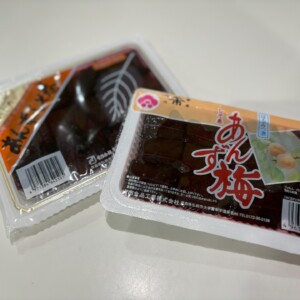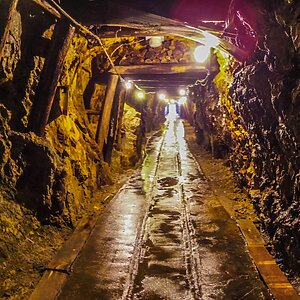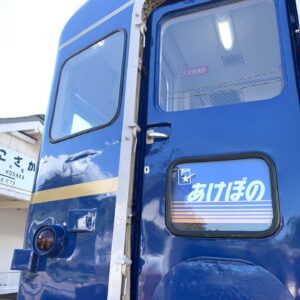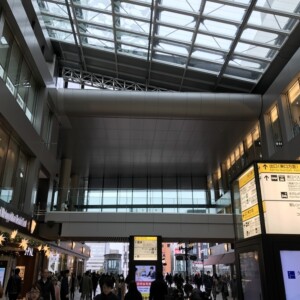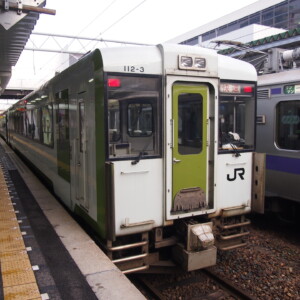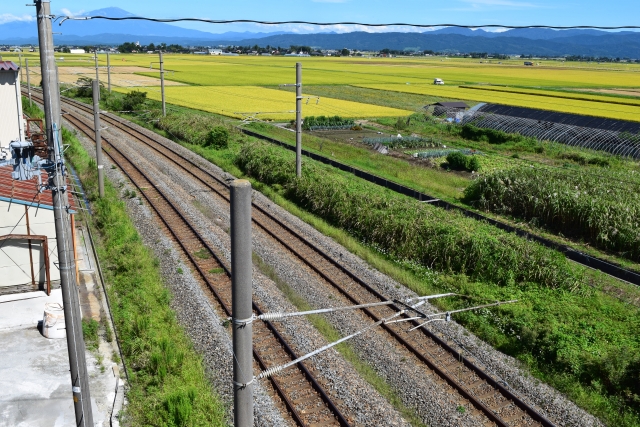
An express train that ran under overhead wires despite being a diesel train (Japan Sea Longitudinal Line)
table of contents
- 1 Japan Sea Line
- 2 Express "Shimokita" (express trains operated under the overhead wires from Morioka Station to Hirosaki Station and from Owani Station to Morioka Station)
- 3 Express "Uetsu" (Niigata Station - Akita Station)
- 4 Express "Shirayuki" (Kanazawa Station - Aomori Station)
- 5 Express "Mutsu" (Akita Station - Aomori Station)
- 6 Express "Komakusa" (Yamagata Station - Akita Station, Aomori Station)
- 7 Conclusion
This time, we will introduce express trains that ran on the section of the line collectively known as the Japan Sea Longitudinal Line although the entire section from the starting station to the terminal station was electrified, operated with diesel railcars instead of electric trains.However there
are many cases where diesel railcars were used for special trains, and it would be difficult to research them all, so we will only introduce regular trains.
Additionally, cases where only some of the trains with multiple starting and ending stations run under overhead wires for the entire section are excluded.
(On this route, the express " Senshu " is excluded.
In addition to the "Senshu" train that connects Sendai Station and Aomori Station, Yonezawa Station and Aomori Station , but the former train runs on the non-electrified Rikuu East Line.)
For details on what "diesel railcars" and "electrification" are, please see the first article in this series, "Tohoku Main Line Edition."
Below are the previous articles.
Japan Sea Line
The Japan Sea Longitudinal Line is a collective term for several lines, and is not an official line name.
Japan Sea Longitudinal Line refers
mainly the group of lines that run from Osaka Station in Osaka Prefecture along the coast of the Sea of Japan to Aomori Station in Aomori Prefecture As it is the shortest route connecting the Kinki region with Aomori Prefecture and Hokkaido, it has long been used for freight transport. There
was also a passenger train that ran along the Japan Sea Longitudinal Line, as seen in the limited express "Hakucho" that ran between Osaka Station and Aomori Station from 1961 to 2001.
Of the routes included in the Japan Sea Longitudinal Line, the following two routes pass through the Tohoku region.
- Uetsu Main Line : From Niitsu Station in Akiha Ward, Niigata City, Niigata Prefecture to Akita Station
- Ou Main Line (Part): Akita Station to Aomori Station in Aomori City, Aomori Prefecture
On the long journey from Niitsu Station to Aomori Station, the train passes through stations such as Shibata, Sakamachi, and Murakami in Niigata Prefecture; Nezugaseki, Amarume, and Sakata in Yamagata Prefecture; Ugo-Honjo, Akita, and Odate in Akita Prefecture; Ikarigaseki, Owani Onsen, Hirosaki, Kawabe, and Shin-Aomori in Aomori Prefecture.
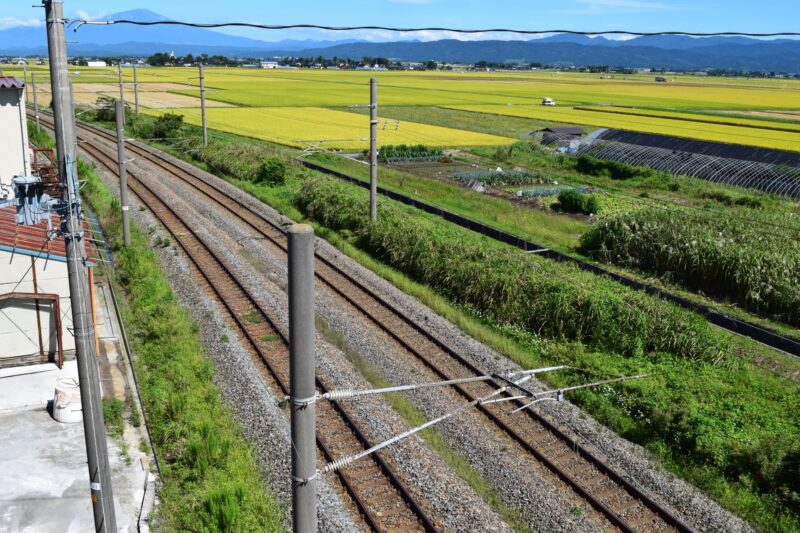
The Uetsu Main Line and the Ou Main Line have long been operated
by numerous express and limited express trains, connecting prefectures along the Sea of Japan coast As there are no parallel Shinkansen lines, the Inaho limited express train still operates between Niigata Station and Sakata Station/Akita Station, and the Tsugaru and Super Tsugaru limited express trains run between Akita Station and Aomori Station.
Niigata Station, the central station in Niigata City, is not on the Uetsu Main Line.
Trains that depart and arrive at Niigata Station, such as the Inaho, travel the Shirayuki Line , and then enter the Uetsu Main Line from Shibata Station (there is no stop between Niitsu Station and Shibata Station).
The Ou Main Line was electrified in
August 1971. was in August 1972 the Hakushin Line was also electrified at the same time ).
With the electrification of the Uetsu Main Line, the electrification of the entire Japan Sea Longitudinal Line between Osaka Station and Aomori Station was completed.
The Uetsu Main Line is electrified with 1,500V DC from Niitsu Station to Murakami Station, and 50Hz/20,000V AC from Murakami Station (excluding station premises) to Akita Station, so the electrification method changes along the way.
Therefore, in order to run electric trains and electric locomotives directly, it is necessary to use vehicles that are compatible with both electrification methods.
On the other hand, the Ou Main Line from Akita Station to Aomori Station is electrified with 50Hz/20,000V AC.
Express "Shimokita" (express trains operated under the overhead wires from Morioka Station to Hirosaki Station and from Owani Station to Morioka Station)
was
Hakkoda semi-express train, which debuted in July 1959. It connected Morioka Station in Iwate Prefecture with Owani Station (now Owani Onsen Station) in Aomori Prefecture via the Tohoku Main Line (now the Iwate Galaxy Railway Line and Aoimori Railway Line) and the Ou Main Line.
Aomori Station, which the train passes through along the way, is a dead-end station, so although it is not the Hakkoda's final destination, the train's direction of travel does change.
*The Iwate Galaxy Railway Line (Morioka Station to Meji Station) and the Aoimori Railway Line (Meji Station to Aomori Station) were both sections of the Tohoku Main Line (now Tokyo Station to Morioka Station) at the time.
The Hakkoda was renamed the semi-express Shimokita in 1961. it is called
Shimokita , even though it does not run on the Ominato Line that runs through the Shimokita Peninsula.
The semi-express "Shimokita" was discontinued in October 1965.
However, the following year, in October 1966, was revived
as an express train from Morioka to Ikarugaseki and from Owani to Morioka It was an unusual train in that its starting and ending stations on the Aomori side were different.
Also, the train bound for Ikarugaseki was treated as a local train, not an express, from Hirosaki Station to its terminal station, Ikarugaseki Station.
From the beginning, it was operated by diesel railcars, rather than a train with a locomotive pulling passenger cars.
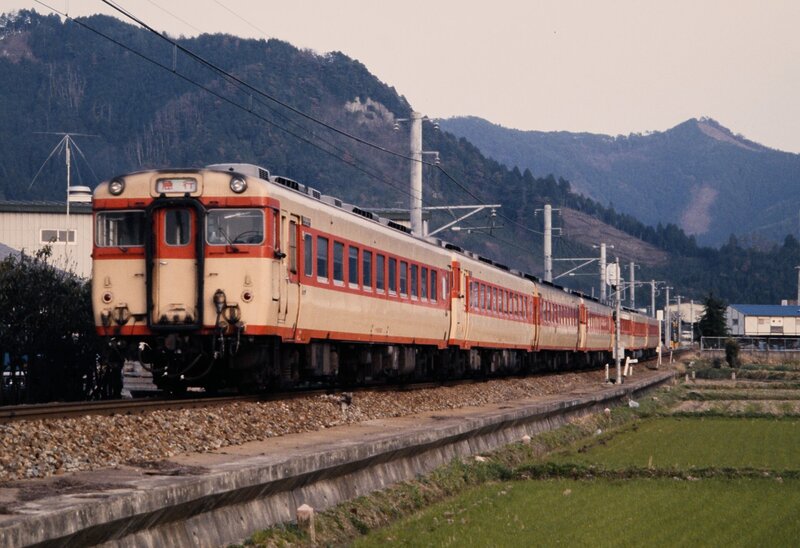
– Own work, CC0,
https://commons.wikimedia.org/w/index.php?curid=156459014
Of the Shimokita's routes, the Tohoku Main Line was electrified in August 1968, and the Ou Main Line was electrified in August 1971, but these were not replaced by electric trains, so from then on the became a diesel express train running under overhead wires
According to the timetable from March 1972, the train operated according to the following schedule.
It took 3 hours and 50 minutes to travel the 241.3 km from Morioka Station to Hirosaki Station, and 4 hours and 20 minutes to travel the 261.2 km from Ikarigaseki Station.
The journey time from Owani Station to Morioka Station, 253.1 km, was 4 hours and 30 minutes.
- Shimokita: 113D (Local train 332D from Hirosaki Station) Departs Morioka Station at 17:55 Arrives Aomori Station at 21:00 (connects to the Seikan Ferry arriving at 20:50) Departs Aomori Station at 21:10 Arrives Hirosaki Station at 21:45 Arrives Ikarigaseki Station at 22:15
- Shimokita: 112D Departs Owani Station at 6:10, arrives Aomori Station at 7:04 (connects to the Seikan Ferry departing at 7:30), departs Aomori Station at 7:25, arrives Morioka Station at 10:40
(The Seikan Ferry was a ferry that connected the railway lines between Aomori Station and Hakodate Station in Hokkaido.)
Even after that, the style of one round trip diesel express train per day remained unchanged.
Perhaps it was not possible to secure an express train that could run on the AC electrified section.
In November 1982, when the Tohoku Shinkansen Line opened, the Shimokita Express to the Hatsukari Limited Express and discontinued.
At the same time as the service was upgraded to an express service, the 485 series electric trains were introduced.
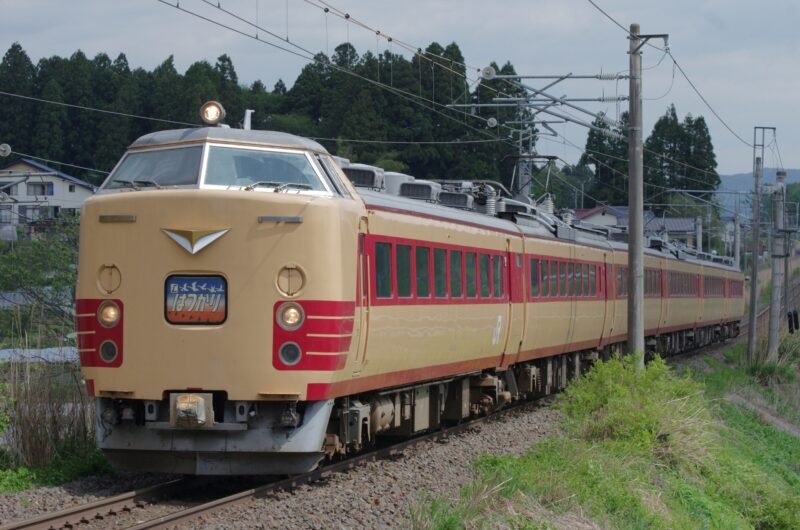
After the upgrade, the "Hatsukari" basically ran between Morioka Station and Aomori Station, but on Fridays, Saturdays, and holidays, one round trip train per day extended its service to Hirosaki Station , suggesting that it was the successor to the express "Shimokita" (however, the operating hours were completely different from those of the express "Shimokita"). However
, since there is no mention of the extended service of the "Hatsukari" between Aomori Station and Hirosaki Station in the timetable from November 1986, it is believed that it ended with the revision at that time.
Its successor, the Hatsukari, was discontinued in December 2002 when the Tohoku Shinkansen was extended from Morioka Station to Hachinohe Station.
Currently, JR East operates a rapid train called "Shimokita."
This train runs between Noheji Station, the starting point of the Ominato Line, or Hachinohe Station on the Aoimori Railway Line, and Ominato Station, the terminus of the Ominato Line. As the
name suggests, this train runs through the Shimokita Peninsula.
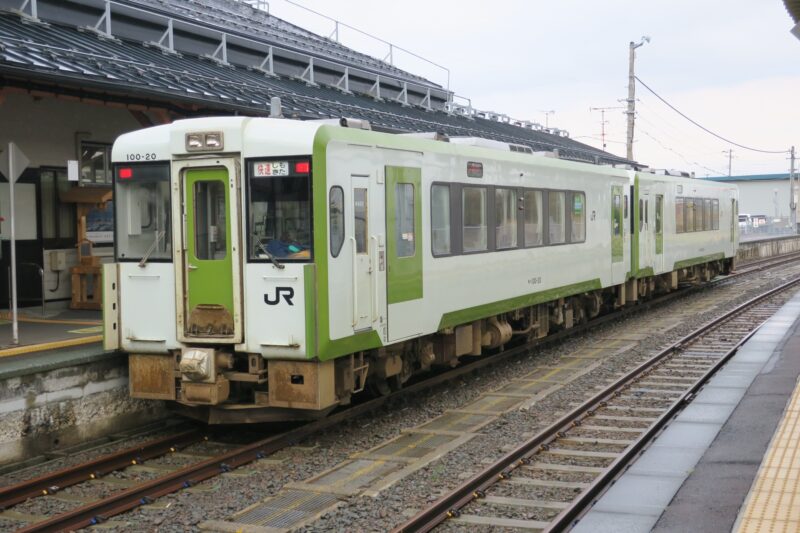
Express "Uetsu" (Niigata Station - Akita Station)
In March 1962, the semi-express " Uetsu " began operating between Niigata Station and Akita Station.
Although the "Uetsu" was discontinued in 1965, the irregular express "Uetsu" reappeared between Niigata Station and Sakata Station in October 1967.
In October 1968, the Uetsu became a daily scheduled train and its service was extended to run between
Niigata Station and Akita Station It can also be said that the service has returned to its original route.
Even after the Hakushin Line and Uetsu Main Line were electrified in August 1972, the Uetsu train continued to be operated by diesel railcars, so it became an overhead
line diesel express train on the entire route In October 1972, the number of Uetsu trains was increased to two round trips per day.
Even with the increased number of trains, they were still operated by diesel railcars.
According to the timetable from October 1978, the timetable was as follows.
The journey time from Niigata Station to Akita Station, a distance of 273.0 km, was around four and a half hours.
The current Inaho limited express takes about three hours and 35 minutes.
- Uetsu 1: 811D Departs Niigata Station at 7:19, arrives Sakamachi Station at 8:08 (separates Asahi 2 bound for Sendai), departs Sakamachi Station at 8:12, arrives Sakata Station at 10:18, arrives Akita Station at 12:04
- Uetsu 3: 813D Departs Niigata Station at 15:31 Arrives Sakamachi Station at 16:20 (separates Asahi 4 bound for Sendai) Departs Sakamachi Station at 16:27 Arrives Sakata Station at 18:20 Arrives Akita Station at 20:03
- Uetsu 2: 812D Departs Akita Station at 7:33, arrives Sakata Station at 9:06, arrives Amarume Station at 9:18 (couples Gassan 1, which departs from Yamagata), departs Amarume Station at 9:24, arrives Nezumigaseki Station at 10:15 (detaches Gassan 1), departs Nezumigaseki Station at 10:20, arrives Niigata Station at 11:56
- Uetsu 4: 814D Departs Akita Station at 12:35 Arrives Sakata Station at 14:16 Arrives Niigata Station at 17:04
The Uetsu train was operated in conjunction with another diesel express train.
Electric trains and diesel railcars cannot be operated together, with a few exceptions, so the Uetsu train continued to be operated by diesel railcars, even though its entire operating area was electrified.
Explaining which trains the "Uetsu" is coupled with is a little complicated.
As of October 1978, the " Uetsu 1 was coupled with Asahi 2 from its starting point at Niigata Station to Sakamachi Station along the way, and Uetsu 3 was coupled with
the " Asahi 4. " The "Asahi" was a train that ran from Niigata Station to Sendai Station via the Hakushin Line, Uetsu Main Line, Yonesaka Line, Ou Main Line, and Senzan Line (via Sakamachi, Yonezawa, and Yamagata Stations).
The Yonesaka Line was not electrified, so the "Asahi" had to be operated with diesel railcars.
Meanwhile, among the trains bound for Niigata, " Uetsu 2 was coupled with
Gassan 1 from Amarume Station to Nezumigaseki Station "Gassan 1" is a train that runs from Yamagata Station to Nezumigaseki Station via the Ou Main Line, Rikuu West Line, and Uetsu Main Line (via Shinjo Station and Amarume Station), and since the Rikuu West Line is not electrified, it also had to be operated by a diesel railcar.
In addition to the "Gassan" trains departing Yamagata for Nezumigaseki (No. 1 and No. 5), there were also other "Gassan" trains departing Yamagata for Sakata (No. 3), Sendai for Sakata (No. 5), Sakata for Yamagata (No. 2 and No. 4), Nezumigaseki for Sendai (No. 4), and Nezumigaseki for Yamagata (No. 6)
(You may think this is confusing, but even I'm confused as I write this).
Trains departing and arriving at Sendai Station were coupled with the "Asahi" mentioned earlier between Sendai and Yamagata stations (on the Senzan Line), and were coupled with "Gassan" trains (with the same number) with a different destination between Yamagata and Amarume stations.
No matter how you look at it, it must have been quite confusing.
In 1982 (probably in June), the "Asahi" train, which it was coupled with, was renamed
Benibana " Since "Asahi" was to be used as one of the nicknames for the Joetsu Shinkansen trains that opened in November, the express "Asahi" was the one that changed its name.
When the Joetsu Shinkansen opened in November, the express "Uetsu" was upgraded to the limited express "Inaho" and discontinued , and the rolling stock was changed to the 485 series electric train.
The express "Shimokita" mentioned earlier was also upgraded to a limited express train and discontinued, but from the end of the JNR era to the early days of JR, express trains were upgraded to limited express trains (or downgraded to rapid trains) all over the country.
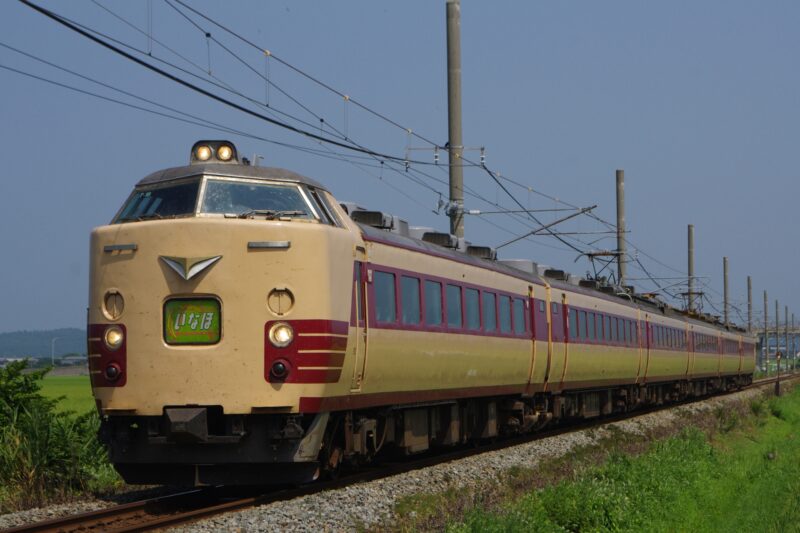
The express "Benibana," which was coupled with the "Uetsu," continued to operate, but its route was shortened to between Yamagata Station and Niigata Station in March 1985.
Passengers traveling between Sendai Station and Niigata Station probably began transferring onto the Tohoku and Joetsu Shinkansen lines, so there was no longer enough demand to run the "Benibana" from Sendai Station.
Later, due to construction work for the opening of the Yamagata Shinkansen, conventional trains were no longer able to travel between Yonezawa Station and Yamagata Station,
so in 1991 the route of the express Benibana was further shortened to between Niigata Station and Yonezawa Station, and it was downgraded to a rapid train.
Since then, there have been no major changes for a while, but the Yonesaka Line was damaged in the heavy rain disaster that occurred in August 2022, and bus replacement service has been provided in the affected sections.
Since the disaster, the rapid "Benibana" service has been suspended and has already been removed from the timetable.
The "Gassan" continued to operate, but according to the timetable from November 1982, it appears that the "Gassan" that departed and arrived at Sendai Station was discontinued.
Furthermore, looking at the timetable from November 1986, trains departing and arriving at Nezumigaseki Station were no longer in operation, and the service was changed to only run between Yamagata Station and Sakata Station (only Gassan No. 1 bound for Sakata operated as a local train from Sakata Station to Fukiura Station, four stations north).
Then, after the launch of JR in 1992, it was downgraded to a rapid train, and the nickname "Gassan" was later dropped.
The rapid train on the Rikuu West Line, which runs between Shinjo Station and Sakata Station, was subsequently nicknamed "Mogamigawa."
However, the Rikuu West Line itself has been suspended since May 2022 due to construction work on a nearby national highway tunnel, and bus transportation has been provided instead.
Express "Shirayuki" (Kanazawa Station - Aomori Station)
In April 1963, the express " Shirayuki " was introduced, connecting Kanazawa Station in Ishikawa Prefecture with the Tohoku region.
Downbound trains departed from Kanazawa and headed for Akita, while upbound trains departed from Aomori and headed
for Kanazawa. In 1965, the downbound train was extended to Aomori as well. This
was unusual, even in the days of the Japanese National Railways (JNR) before the launch of JR (April 1987), in that it connected cities that
were not close to each other Most express trains either connect major cities, connect major cities with regional cities, or, like the "Uetsu," connect regional cities that are relatively close to each other.
Although the route was electrified in August 1972, the Shirayuki continued to be a diesel train.
The Shirayuki's operating distance was 772.4 km, which is probably the longest operating distance in the history of Japanese railways for
a diesel express train that runs entirely under overhead wires (Note: There is an even longer diesel express train called the Naha that runs entirely under overhead wires. Its
operating distance was over 900 km, between Osaka Station and Nishi-Kagoshima Station (now Kagoshima-Chuo Station).
According to the timetable for October 1978, the Shirayuki's schedule is as follows:
The 772.4km ride from Kanazawa Station to Aomori Station took about 12.5 hours (?). The
train was not scheduled to allow transfers to the Seikan Ferry at Aomori Station, so it was likely intended solely to connect the Hokuriku, Niigata, and Tohoku regions.
- Shirayuki: 501D Departs Kanazawa Station at 9:49, arrives Itoigawa Station at 11:56 (detaches Hakuba bound for Matsumoto), departs Itoigawa Station at 12:02, arrives Niigata Station at 14:26, arrives Sakata Station at 17:16, arrives Akita Station at 18:56 (couples with Kitakami No. 3 departing from Sendai), departs Akita Station at 19:21, arrives Aomori Station at 22:18
- Shirayuki: 502D Departs Aomori Station at 6:50, arrives Akita Station at 9:46 (detaches Kitakami No. 4 bound for Sendai), departs Akita Station at 9:57, arrives Sakata Station at 11:34, arrives Niigata Station at 14:15, arrives Itoigawa Station at 17:04 (couples with Hakuba departing from Matsumoto), departs Itoigawa Station at 17:18, arrives Kanazawa Station at 19:17
The reason they couldn't replace it with electric trains is probably because they couldn't afford express electric trains.
The electrification systems from Kanazawa Station to Aomori Station are 60Hz AC, DC, and 50Hz AC, respectively, from west to east, and to convert the express "Shirayuki" to an electric train, an expensive electric train compatible with all three electrification systems would be required.
Like the Uetsu, the Shirayuki was also coupled with other diesel express trains along the way.
Hakuba express train between Kanazawa Station and Itoigawa Station in Niigata Prefecture .
Between Akita Station and Aomori Station, the Shirayuki bound for Aomori was coupled with the Kitakami 3 train, and the Shirayuki bound for Kanazawa was coupled with Kitakami 4 express
"Hakuba" connected Kanazawa Station and Matsumoto Station in Nagano Prefecture via the Hokuriku Main Line (currently the IR Ishikawa Railway Line, Ainokaze Toyama Railway Line, and Japan Sea Hisui Line) and the Oito Line.
"Kitakami" connected Sendai Station and Aomori Station via the Tohoku Main Line, Kitakami Line, and Ou Main Line (via Kitakami Station, Yokote Station, and Akita Station).
Because some sections of the Oito Line and the Kitakami Line are not electrified, these trains had to be operated by diesel railcars, and as long as they were coupled, "Shirayuki" could not be made into an electric train.
With the opening of the Joetsu Shinkansen in November 1982, the express "Shirayuki" was extended to run between Fukui Station and Aomori Station, and was upgraded to the limited express "Shiratori" and converted to the 485 series electric train (though the departure and arrival times changed significantly).
Until its demise, "Shirayuki" only operated one round trip per day using diesel railcars.
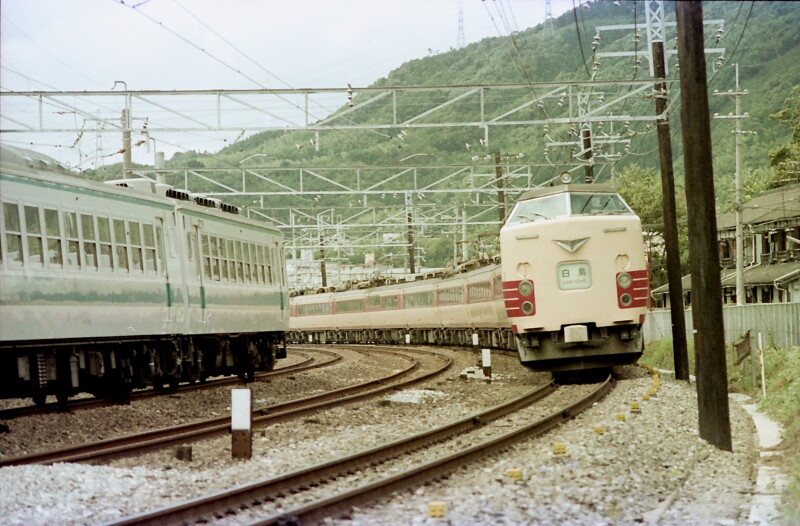
by Gohachiyasu1214 - Own work, CC BY-SA 4.0
, https://commons.wikimedia.org/w/index.php?curid=123866005
The Hakuba service, which was coupled with the Shirayuki, was also discontinued at the same time.
The Kitakami was also downgraded to a rapid service, and its operating area was shortened to the section from Kitakami Station to Yuzawa Station in Akita Prefecture, meaning that it no longer runs on the Japan Sea Main Line.
The successor to the Shirayuki, the Shiratori, which departed and arrived at Fukui Station, was shortened to run between Fukui Station and Niigata Station in a timetable revision in March 1985, just over two years after its introduction, and was changed to Hokuetsu
was discontinued
in March 2015 when the Hokuriku Shinkansen was extended from Nagano Station to Kanazawa Station The train that can be called the successor to the Hokuetsu is the Limited Express Shirayuki, which runs only within Niigata Prefecture between Arai Station, Joetsu Myoko Station and Niigata Station (via the Myoko Haneuma Line and Shinetsu Main Line).
The Limited Express Shirayuki is the successor (Hokuetsu) to the successor (Shiratori) to the express Shirayuki. However, because
the lengths of the routes they operate are so different, it is unclear whether they can be called trains of the same lineage, even if they share the same nickname.
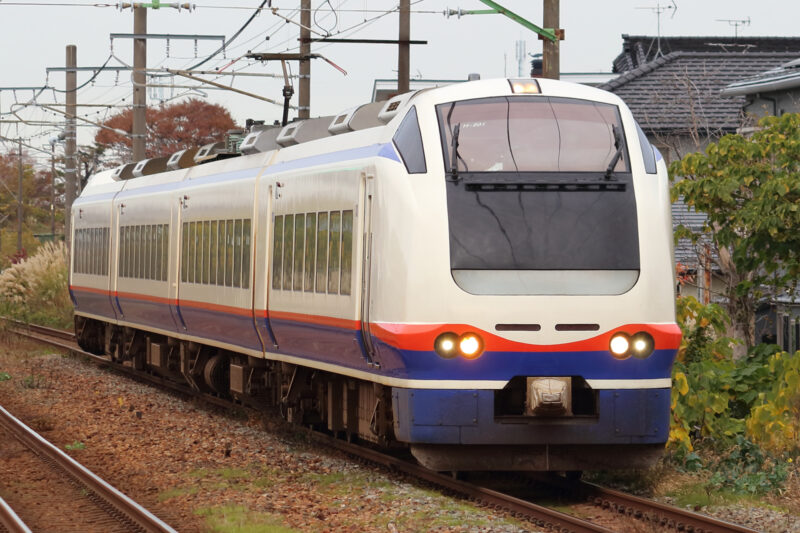
Click here for a separate article about the express train "Shirayuki."
Express "Mutsu" (Akita Station - Aomori Station)
In October 1963, Mutsu " began operating
between Sendai Station and Aomori Station via the Tohoku Main Line In October 1965, the "Mutsu" extended its route from Sendai Station to Akita Station via Aomori Station, becoming a train that travels around northern Tohoku.
Since the distance from Sendai Station to Akita Station is shorter via the Kitakami Line (a line connecting Kitakami Station in Iwate Prefecture and Yokote Station in Akita Prefecture), it is believed that there were almost no passengers who rode the entire route.
In October 1968, the section between Sendai Station and Aomori Station, which was supposed to be the Mutsu's roots, was handed over to the express Kurikoma , and the Mutsu was re-routed to run between Akita Station and Aomori Station.
Since "Mutsu" mainly refers to the Pacific side of the Tohoku region , the train has become far removed from the original image of Mutsu.
Incidentally was
also an overhead rail diesel express train for the entire route until it was converted to an electrified train in March 1972. It is introduced in the Tohoku Main Line section.
In October 1970, the number of "Mutsu" trains was increased to two round trips per day.
Although the Ou Main Line was electrified in August 1971, "Mutsu" continued to operate with diesel railcars, and became an overhead rail express train on all sections .
This is probably because the trains it was coupled to were diesel railcars.
According to the timetable from March 1972, the Mutsu timetable at the time was as follows.
The ride time for the 185.8km journey from Akita Station to Aomori Station was between 3 hours 10 minutes and 3 hours 29 minutes.
By comparison, the current Super Tsugaru takes about 2.5 hours.
None of the four trains below were scheduled to allow transfers to the Seikan Ferry at Aomori Station, and were trains whose sole purpose was to connect Akita and Aomori.
- Mutsu No. 1: 615D Departs Akita Station at 7:36, arrives Odate Station at 9:18 (separates from Miyako-bound Yoneshiro No. 1), departs Odate Station at 9:22, arrives Aomori Station at 11:00
- Mutsu No. 2: 617D Departs Akita Station at 17:29 Arrives Odate Station at 19:19 Departs Odate Station at 19:21 Arrives Aomori Station at 20:39
- Mutsu No. 1: 616D Departs Aomori Station at 8:10, arrives Odate Station at 9:27 (coupled with Yoneshiro No. 1 departing from Morioka), departs Odate Station at 9:34, arrives Akita Station at 11:20
- Mutsu No. 2: 618D (coupled with Fukaura departing from Rikuchu-Yagi) Departs Aomori Station at 17:40 (detaches Fukaura bound for Fukaura) Departs Kawabe Station at 18:17 Arrives Odate Station at 19:12 (coupled with Yoneshiro No. 2 departing from Miyako) Departs Odate Station at 19:23 Arrives Akita Station at 21:09
(Currently, outbound trains are odd-numbered and inbound trains are even-numbered, but prior to the timetable revision in October 1978, no such distinction was made.)
The "Mutsu 1" bound for Aomori was coupled with
Yoneshiro 1 from Akita Station to Odate Station "Yoneshiro 1" was a train that ran from Akita Station to Miyako Station in Iwate Prefecture via the Ou Main Line, Hanawa Line, Tohoku Main Line (now the Iwate Galaxy Railway Line), and Yamada Line (via Odate Station, Koma Station, and Morioka Station). Since
the Hanawa Line and Yamada Line were not electrified, it was necessary to operate the train using diesel railcars.
The "Mutsu 1" bound for Akita was also coupled with Yoneshiro 1 from Odate Station to Akita Station from Morioka, not Miyako (it does not run on the Yamada Line).
The "Mutsu 2" bound for Akita also coupled with Yoneshiro 2 departed from Miyako .
Furthermore, the " Mutsu 2 was also coupled with Fukaura on the section from Aomori Station to Kawabe Station
The "Fukaura" ran from Rikuchu-Yagi Station in Iwate Prefecture via the Hachinohe Line, Tohoku Main Line (now the Aoimori Railway Line), Ou Main Line, and Gono Line (passing Hachinohe Station, Aomori Station, Kawabe Station, and Goshogawara Station) to Fukaura Station.
It was a train that would be unthinkable today, running from the northeastern edge of Iwate Prefecture to the western edge of Aomori Prefecture via Aomori Station. Since
the Hachinohe Line and Gono Line are not electrified, it was necessary to operate it using diesel railcars.
There was also a time when "Fukaura" was treated as a local train on both the Hachinohe Line and the Gono Line, and in this case the only sections where it operated as an express train were on the Tohoku Main Line and the Ou Main Line.
In that sense, "Fukaura" was also a train whose "entire section where it operated as an express train" was electrified.
In November 1982, one more round trip of the "Mutsu" was added, bringing the total number of round trips to three per day.
Meanwhile, coupled service with other trains was reduced, coupled
with the "Yoneshiro No. 3" between Odate Station and Hirosaki Station The "Yoneshiro"'s operating area had changed from before, heading north from Morioka Station on the Tohoku Main Line (now the Iwate Galaxy Railway Line) before entering the Hanawa Line. From Odate Station, instead of continuing on the Ou Main Line towards Akita Station, there was now one round trip per day that terminated at Odate Station, and one that continued north to Hirosaki Station.
In March 1985, the express "Mutsu"
- Upgraded to an express train
- 485 series train
- Reduced to one round trip per day
With the above measures taken, the Mutsu was discontinued as a diesel express train .
The "Yoneshiro" train, which was coupled with the express "Mutsu," was also downgraded to the rapid "Hachimantai.
" The "Hachimantai" service was discontinued in March 2015.
Then, in November 1986, about a year and a half after the launch of the Mutsu express train, the Mutsu express train was also discontinued .
The role of the Mutsu, which connected Akita Station and Aomori Station, will be taken over by the Inaho limited express, which connects Niigata Station and Aomori Station, and the Tazawa limited express, which connects Morioka Station and Aomori Station via the Tazawako Line and Ou Main Line (via Omagari Station and Akita Station).
Later, with the opening of the Akita Shinkansen in March 1997, the limited express train between Akita Station and Aomori Station was renamed
Kamoshika Furthermore, with the extension of the Tohoku Shinkansen from Hachinohe Station to Shin-Aomori Station in December 2010, the limited express train between Akita Station and Aomori Station was renamed " Tsugaru ," and in March 2024, the " Super Tsugaru ," which makes fewer stops, was introduced, and remains so to this day.
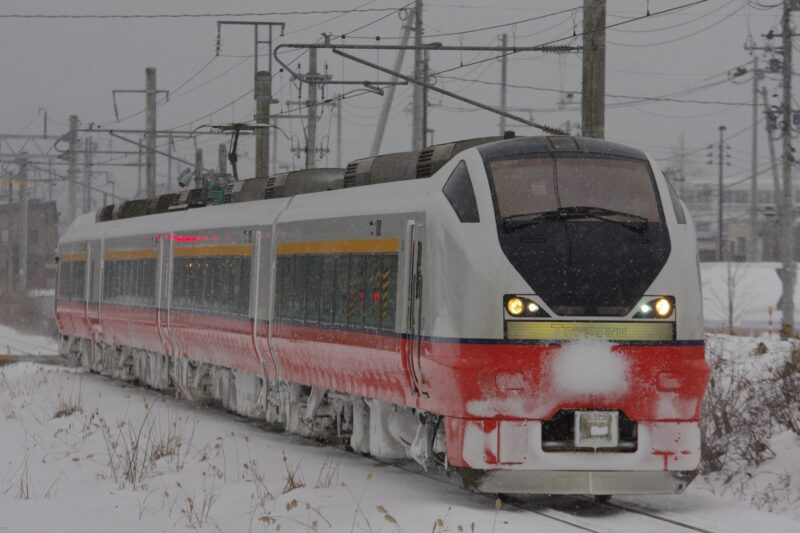
Express "Komakusa" (Yamagata Station - Akita Station, Aomori Station)
Komakusa which ran between Yamagata Station and Aomori Station via the Ou Main Line was
an overhead rail diesel express train that ran along part of the Japan Sea Longitudinal Line Please see the Ou Main Line/Senzan Line section for more information.
Conclusion
This will be the last of the series on diesel express and limited express trains that ran under overhead wires on all sections.
I think I have introduced all of the relevant regular trains in the Tohoku region to the extent that I can tell from the timetables I have.
I hope you have experienced the surprise of realizing that there were trains like this in the past
As an aside, there are still many local trains that run entirely under overhead rails, as featured in this series
(there are also several limited express trains in Western Japan, such as Rakuraku Biwako No. 4, Maizuru No. 5, 15, 6, and 14, and Hashidate No. 9).
In particular, on the Uetsu Main Line, which was the subject of this article, all local trains running between Murakami Station and Mashima Station (the section where the electrification method will change) and the special rapid train Kairi (Niigata Station to Sakata Station) are operated by diesel railcars.
Electric trains are not the only vehicles used on railways.
Diesel railcars are also widely used, taking advantage of their ability to move independently regardless of whether or not they are electrified and the type of electrification they use.


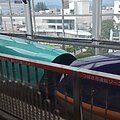
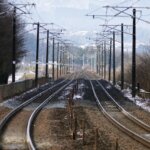
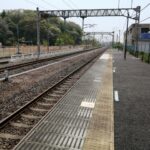
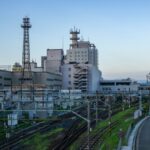









!["Gokanezaki Furofushi Hot Springs" allows you to enjoy the best sunsets and starry sky in Japan! [Aomori Prefecture] Koganezaki Furofushi Hot Spring](https://jp.neft.asia/wp-content/uploads/2018/09/25810772_m-150x150.jpg)
![Oirase Mine is the largest mine in the Orient! Exploring the mines at a huge photogenic ruin! [Kakunodate City, Akita Prefecture] Inside the Oirase Mine](https://jp.neft.asia/wp-content/uploads/2018/09/27644489_m-150x150.jpg)
![[Sakata City, Yamagata Prefecture] Enjoy Tohoku's famous sweets at "Holland Senbei FACTORY"! Experience baking and seasoning yourself Dutch rice crackers](https://jp.neft.asia/wp-content/uploads/2018/07/151f3a0247fc50438bbff6d24e7e543d_s-150x150.jpg)
![[Yuzawa City, Akita Prefecture] “Kawarage Jigoku” is a pure white different world! Enjoy a taste of heaven at Oyu Falls and Doroyu Onsen volcanic gas](https://jp.neft.asia/wp-content/uploads/2018/08/213d3202f8f017dfb676aa5c82a35afa_s-150x150.jpg)
![[Tsuruoka, Yamagata Prefecture] Introducing 3 traditional sweets that are perfect as souvenirs! We also pick up famous historical stores 22847010_m](https://jp.neft.asia/wp-content/uploads/2018/11/22847010_m-150x150.jpg)
